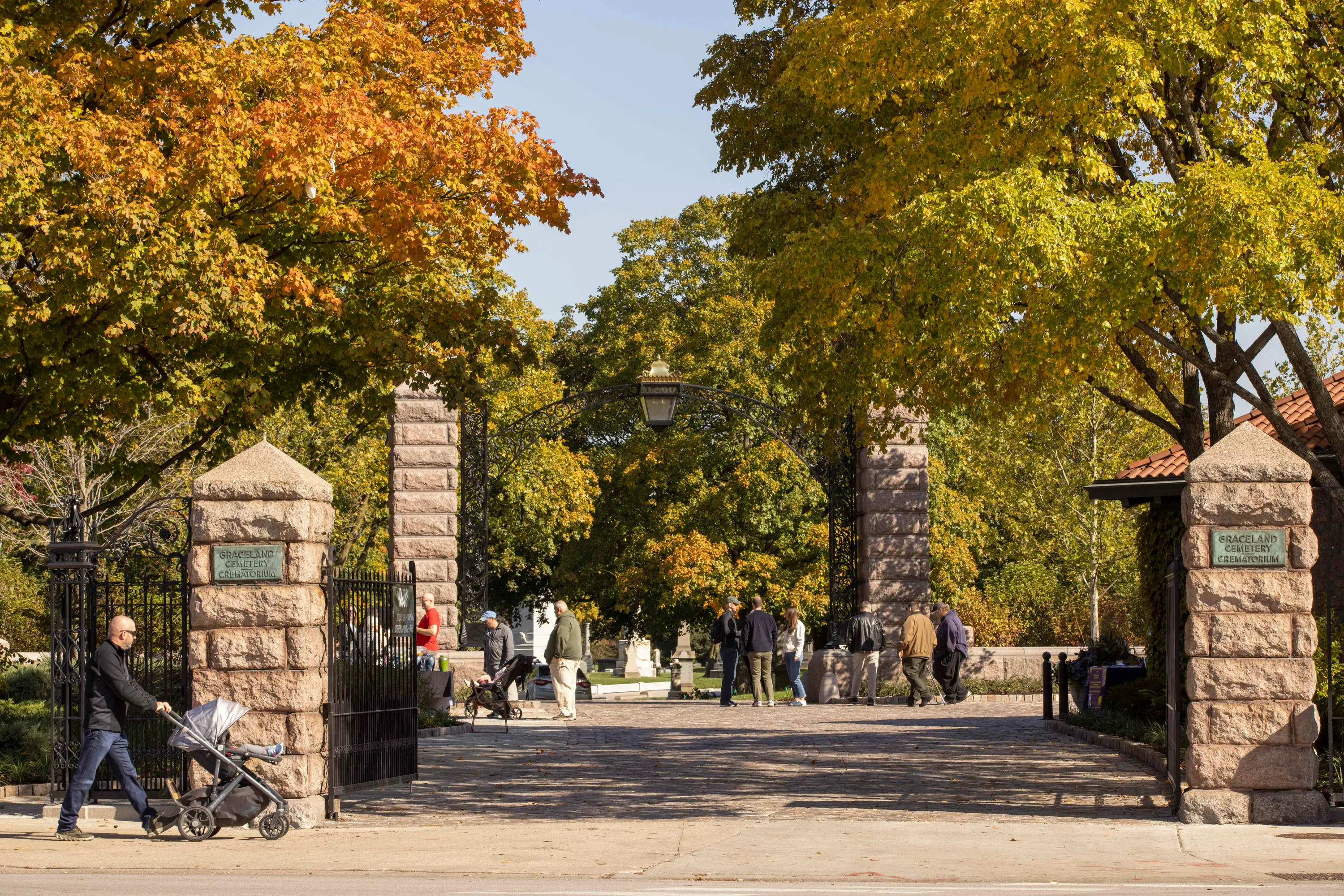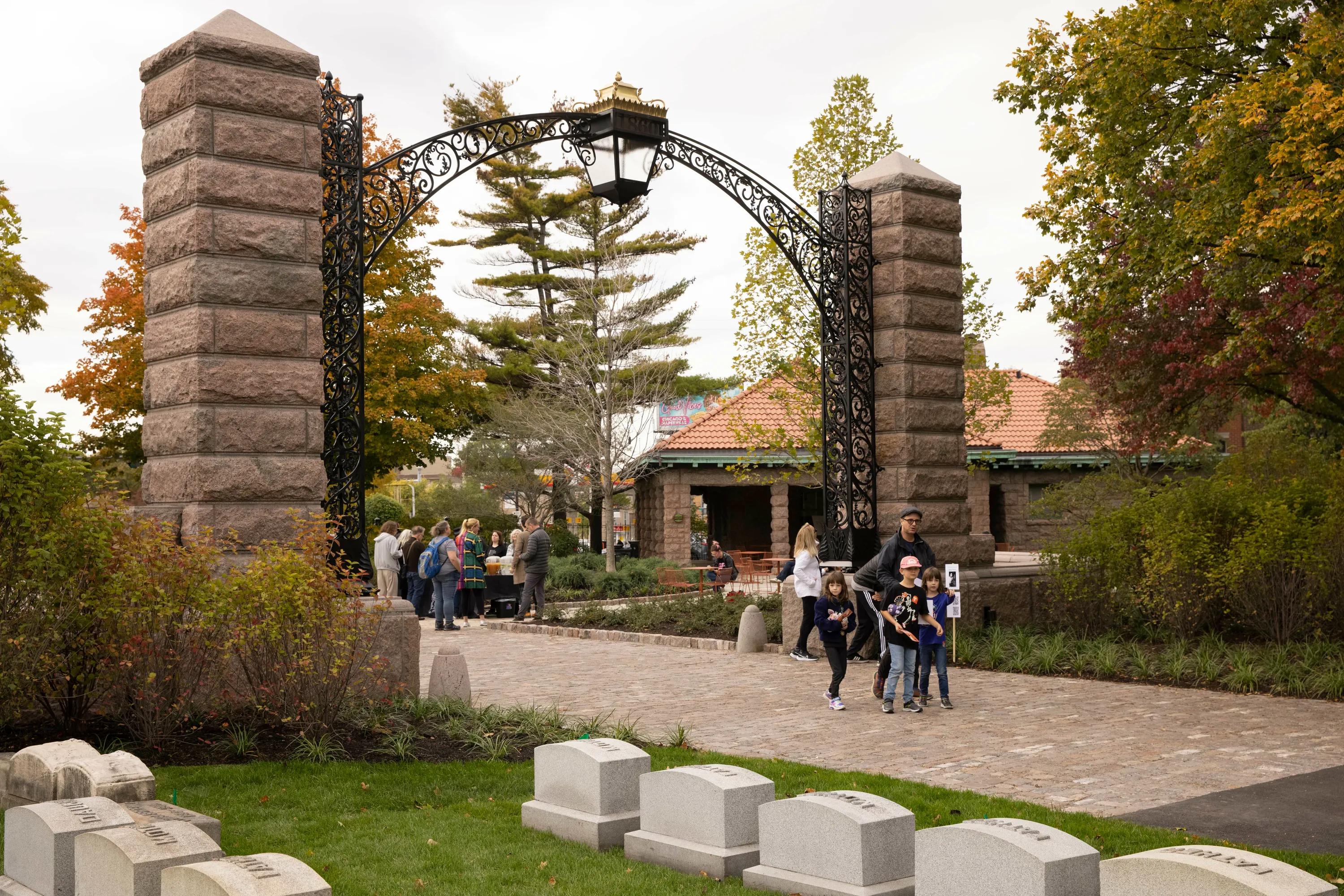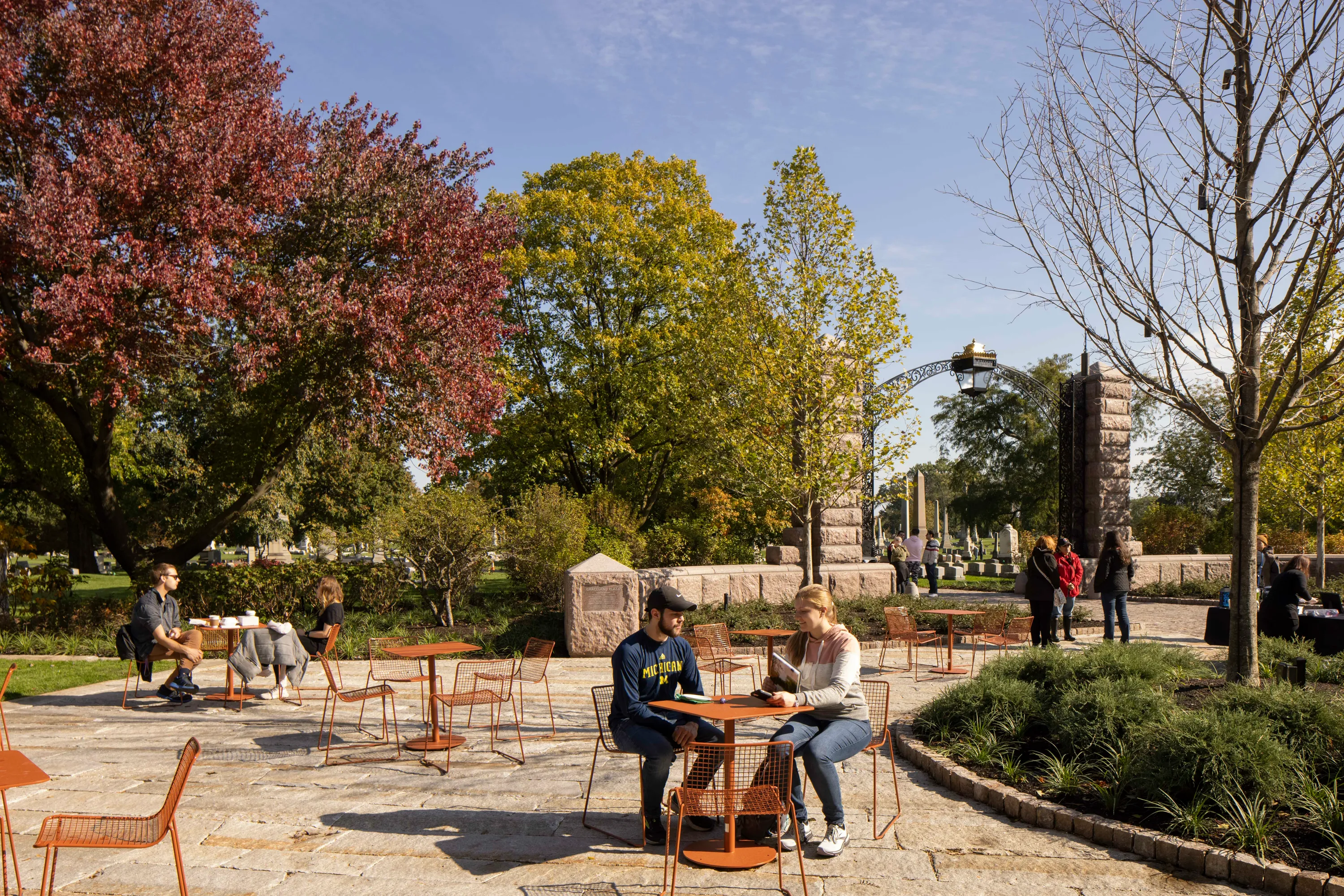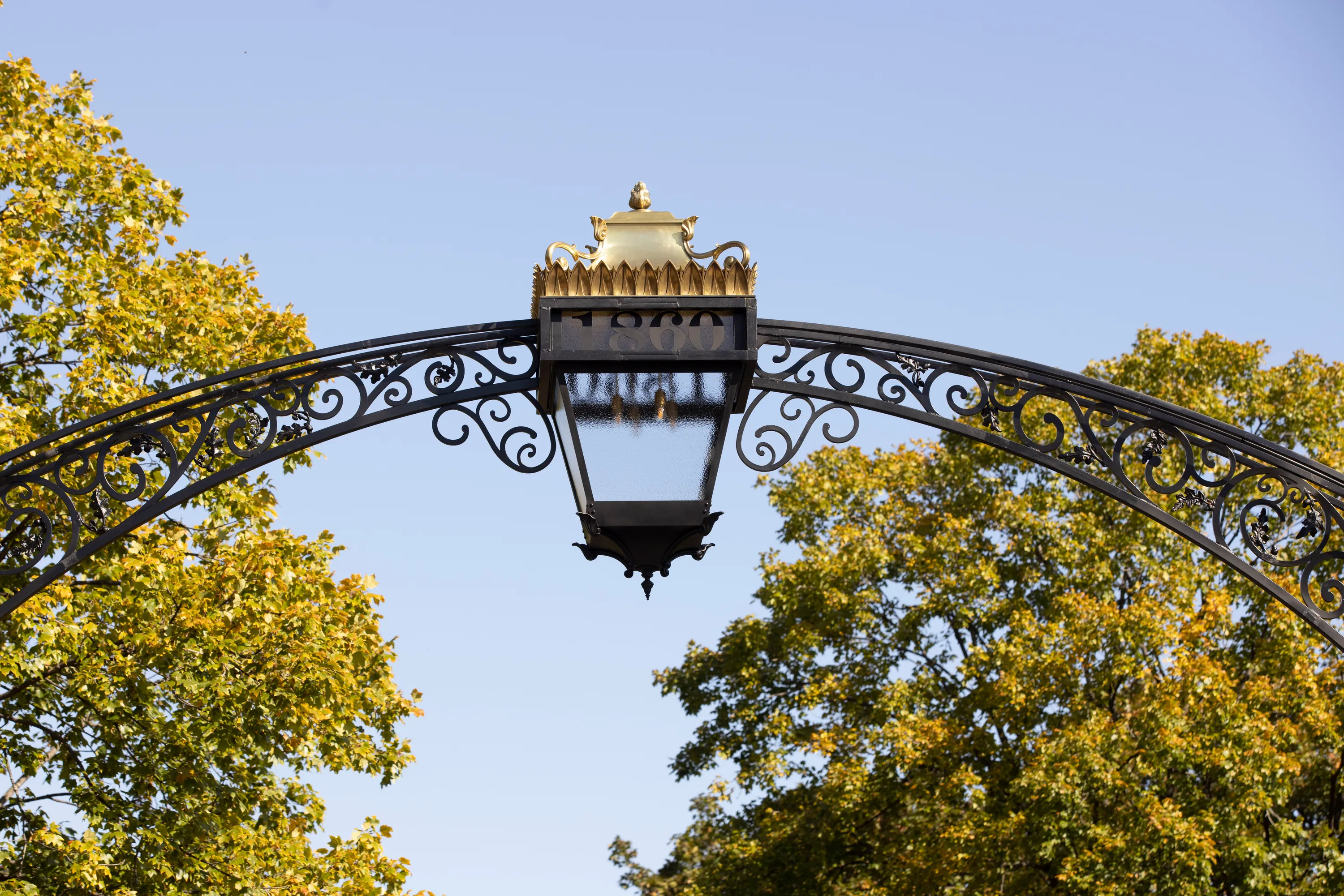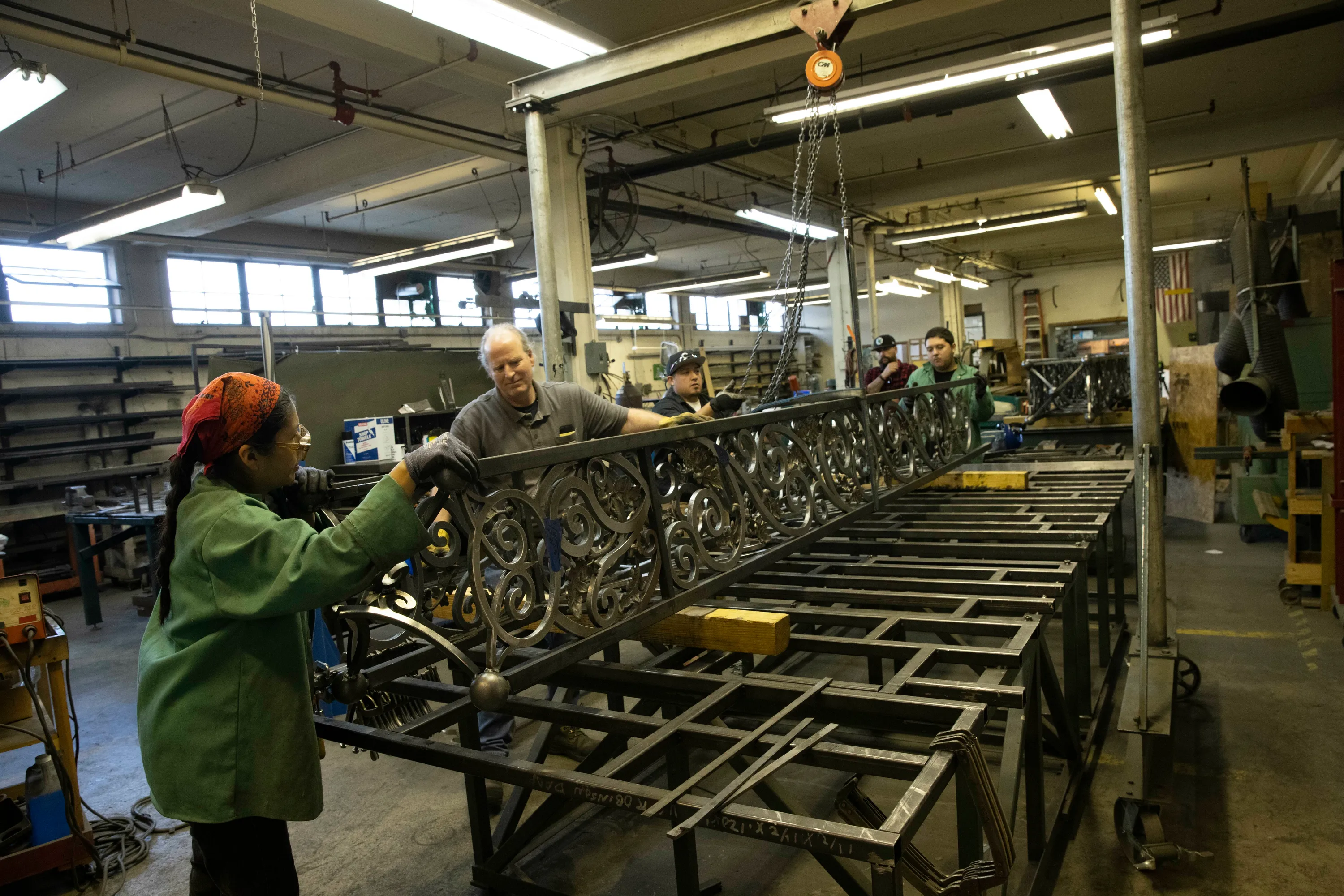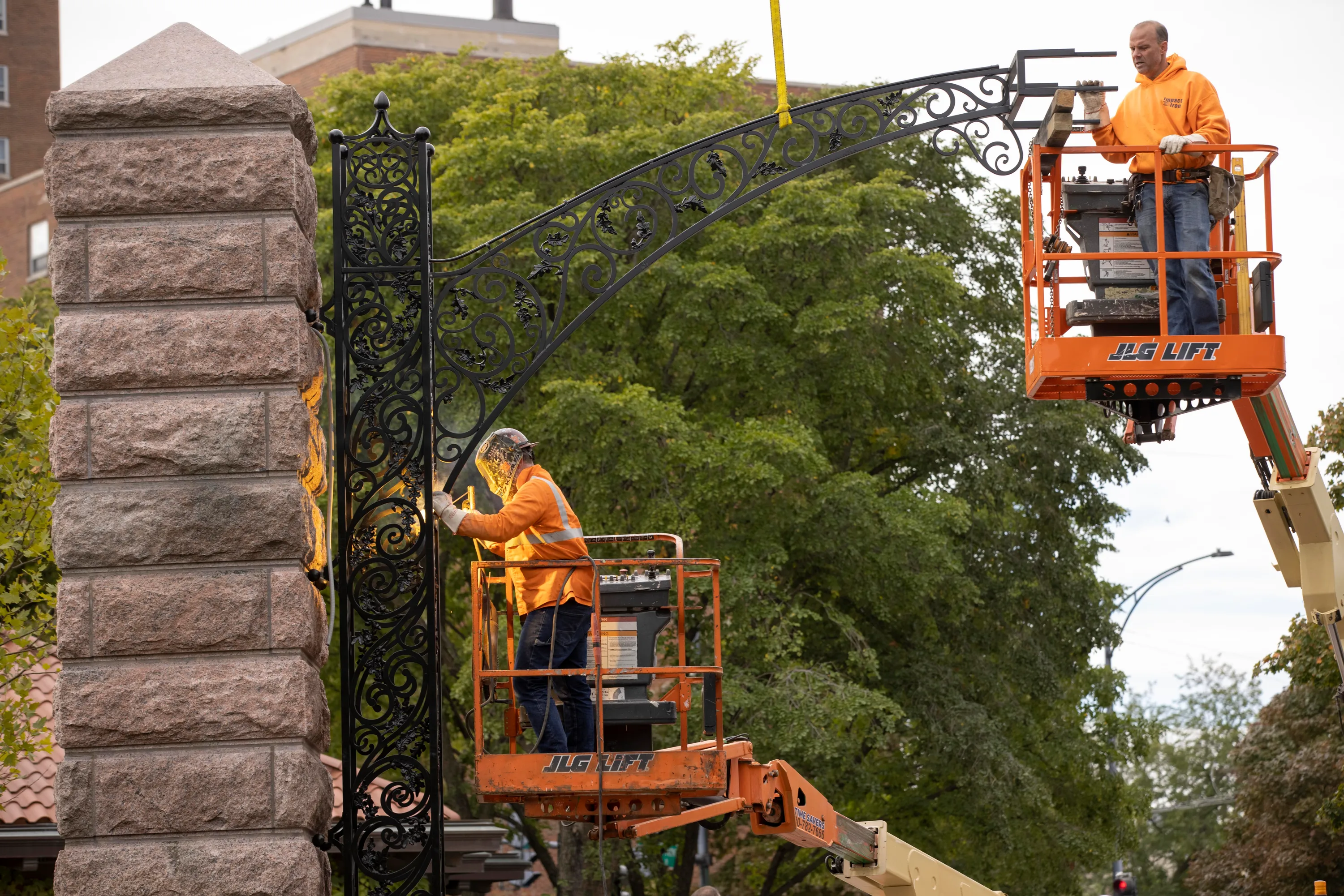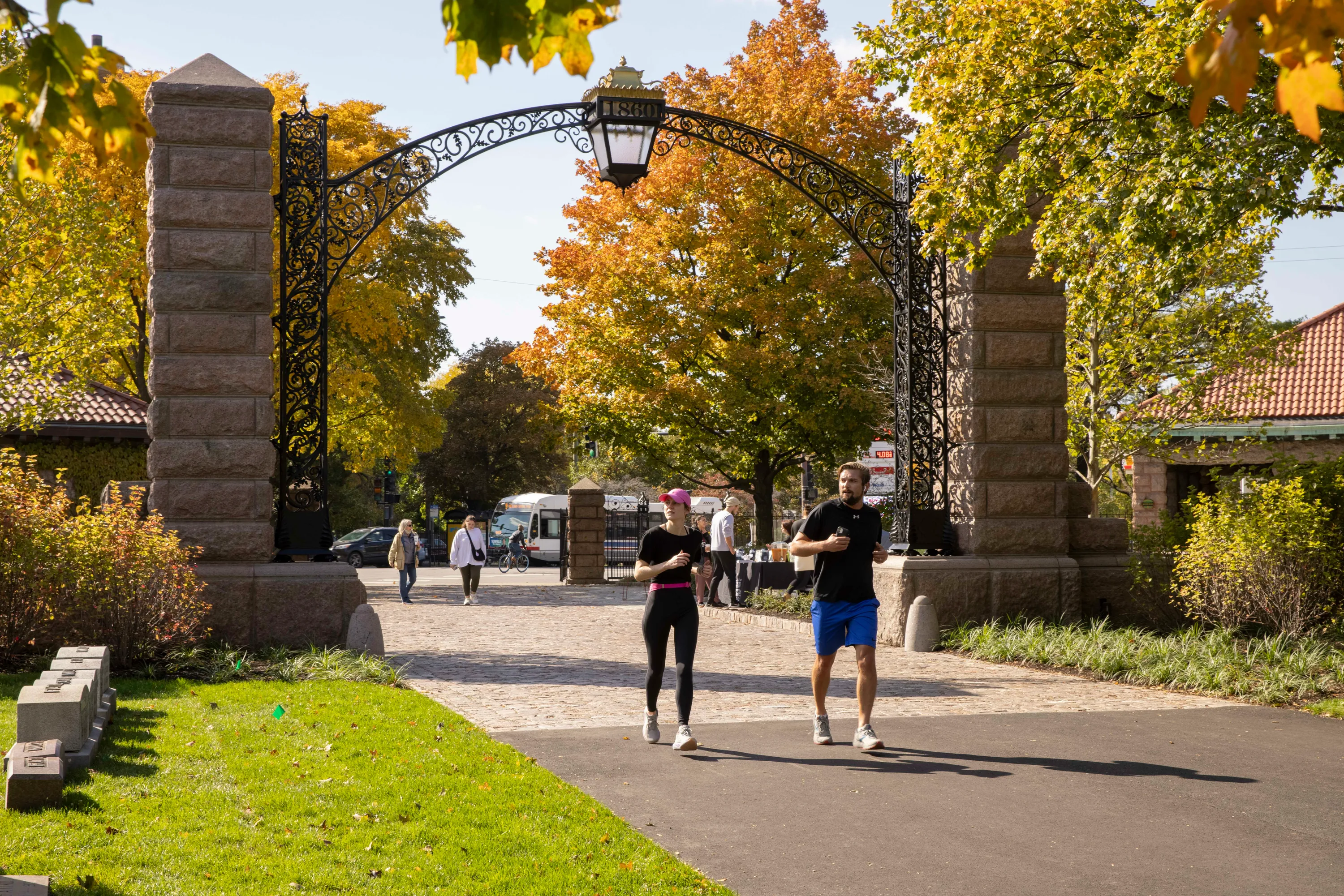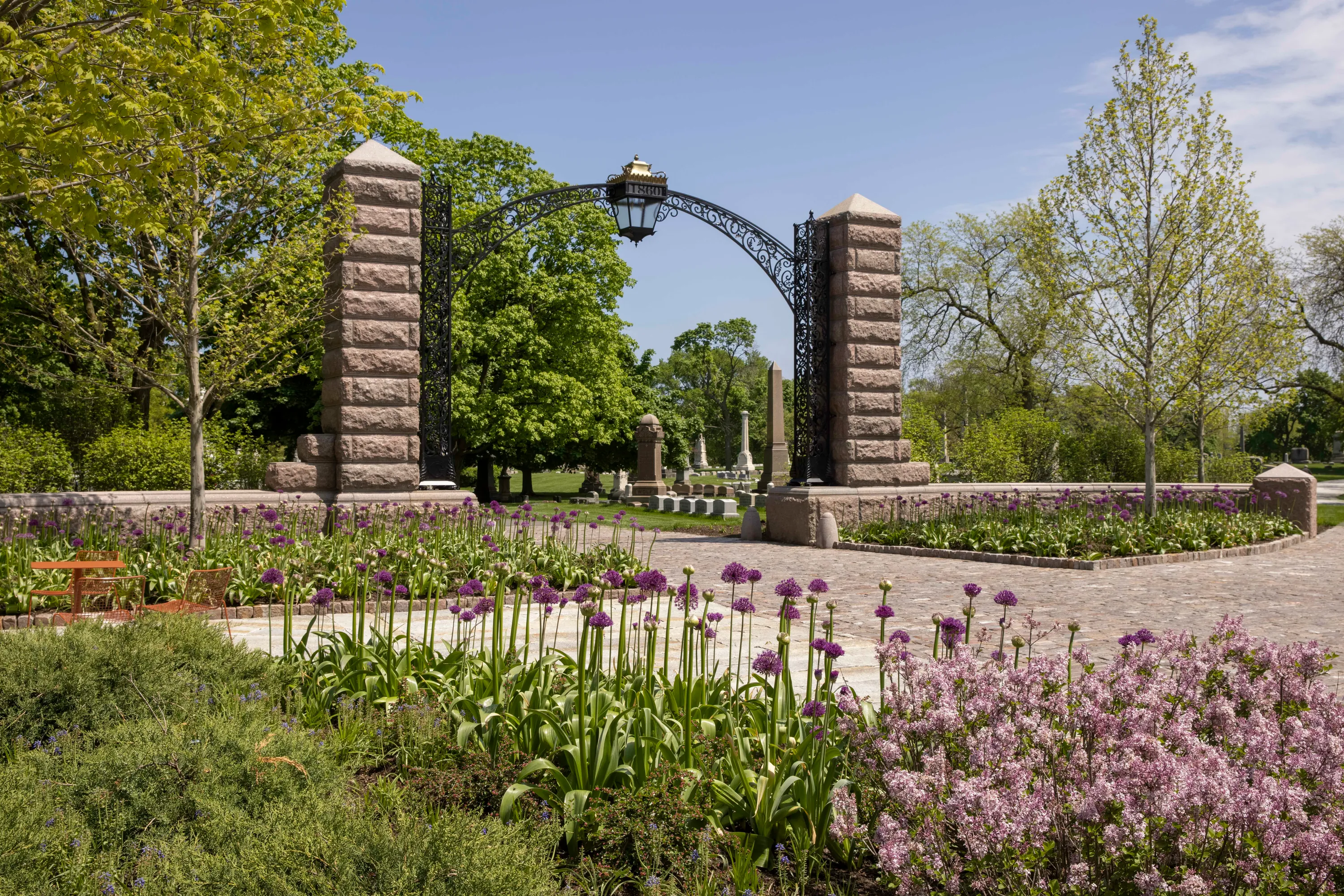Initially tasked with a simple refurbishment, our team re-envisioned the main entrance for the cemetery, including restoring a gateway into the cemetery where one hadn’t existed since 1890. Our team found ways to reposition the space and create flexibility within a confined area that couldn’t be expanded due to adjacent burials. By consolidating two parking areas by the entry, the team established an active, engaging plaza space that emphasized the visitor experience, focusing more on public use while keeping longevity and timelessness at the forefront of the design.
The “forecourt” or outdoor vestibule is a liminal space to collect oneself and transition from the celebration of the living to a place of memorial for the past. Using the archway as its centerpiece, the entryway signals that you are transitioning into the cemetery – a quiet place of solitude and reflection for past loved ones. In such a dense part of the city, it was important to consider the forecourt as a place inside the cemetery, separated from the gravestones, to celebrate life and host activities for the modern needs of the cemetery, which became a significant meeting place for friends and family during the COVID-19 pandemic.
